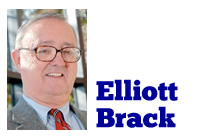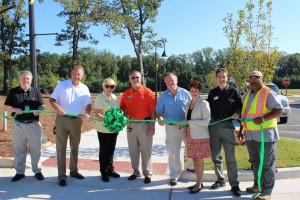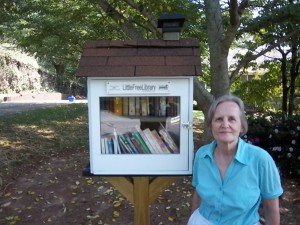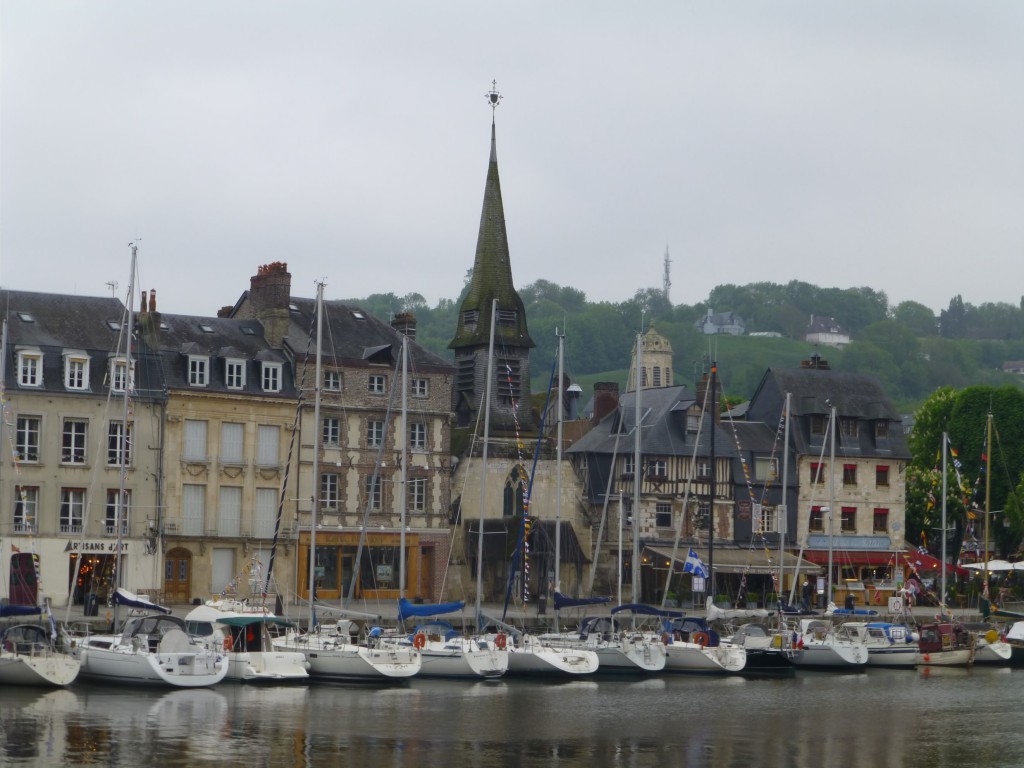 POTENTIAL CHANGES: This is one conception of what the area around Gwinnett Place Mall could look like, as the Gwinnett Place Community Improvement District studies ways to transform the area. Among the suggestions are changes in road facilities, including a possible roundabout at Pleasant Hill Road and Satellite Boulevard. For more detail, see Today’s Focus below.
POTENTIAL CHANGES: This is one conception of what the area around Gwinnett Place Mall could look like, as the Gwinnett Place Community Improvement District studies ways to transform the area. Among the suggestions are changes in road facilities, including a possible roundabout at Pleasant Hill Road and Satellite Boulevard. For more detail, see Today’s Focus below.
IN THIS EDITION
TODAY’S FOCUS: Activate Gwinnett Place Plans Seeks Transformation of Area
EEB PERSPECTIVE: No Tenure for Faculty at Georgia Gwinnett College
ANOTHER VIEW: What It Was Like to Attend White House Visit of the Pope
FEEDBACK: Many Different Approaches to Naming the National Debt
UPCOMING: Take Back Prescription Drugs Saturday for Three Police Departments
NOTABLE: Why Snellville Used a Green Ribbon at Recent LCI Completion
RECOMMENDED READ: Captains Courageous by Rudyard Kipling
GEORGIA TIDBIT: Coastal Workers Build Liberty Ships in Savannah and Brunswick
TODAY’S QUOTE: Words of Wisdom from our 20th President
MYSTERY PHOTO: How Many Can Spot This?
LAGNIAPPE: Festival is This Weekend; Scenes from the 2014 Duluth Fall Festival
TODAY’S FOCUS
Activate Gwinnett Place Plan seeks transformation of area
By Joe Allen, director, Gwinnett Place CID
DULUTH, Ga., Sept. 25, 2015 | As the Gwinnett Place Community Improvement District completed its Activate Gwinnett Place Multi-Modal Green Corridor Master Plan, the idea was to propose bold ideas for the District’s future.
Building upon the 2012 LCI vision for the area, the Activate Gwinnett Place identifies specific projects for investment to improve transportation options, storm water challenges, connectivity and livability through greenspaces and feasible infrastructure changes.
The master plan identifies an infrastructure framework that invites mixed-use developments, creates greater connectivity between commercial centers and enhances public green space. The plan’s key elements include a “grand promenade” trail network, connectivity with McDaniel Farm Park, intersection and roadway improvements, and storm water management solutions that can also serve as a public amenity.
Any redevelopment done in the area will have to comply with current storm water management codes and practices. The Activate Gwinnett Place plan proposes improving the existing pond to provide more storage of storm water runoff, thereby reducing costs for potential redevelopers. The current footprint could remain the same, but have a deeper pond depth that could expand to neighboring open parcels. It also can be used as a park amenity.
 To move away from an auto-centric area to a pedestrian and bike friendly urban fabric, Activate Gwinnett Place proposes improvements to roadways to make them more pedestrian and bike friendly. In the long-range, possible intersection improvements at Satellite Boulevard and Pleasant Hill Road could provide for enhanced walkability and open space. One possible intersection improvement design might take the form of a circular, signalized roadway or traffic circle.
To move away from an auto-centric area to a pedestrian and bike friendly urban fabric, Activate Gwinnett Place proposes improvements to roadways to make them more pedestrian and bike friendly. In the long-range, possible intersection improvements at Satellite Boulevard and Pleasant Hill Road could provide for enhanced walkability and open space. One possible intersection improvement design might take the form of a circular, signalized roadway or traffic circle.
After all, traffic studies show that an increase of development activity will likely cause the Pleasant Hill Road and Satellite Boulevard intersection to fail. The plan proposes creating a transformative traffic circle at the intersection. Similar traffic circles, such as Young Circle Park in Hollywood, Fla., are in use around the globe. The CID has recently issued a RFP to continue refining this concept.
A large linear park known as the “grand promenade” could serve as “the spine” that connects all the projects and property in the area. This promenade serves as a path for both pedestrians and bicyclists moving throughout the central business district. The width might vary from 15 to 100 feet wide. It would be lined with public spaces that reflect the rich diversity of today’s Gwinnett County.
At the widest segments, social space such as kiosks, cafés, plazas and mini-play areas will co-exist with a multi-use path network designed for both pedestrians and cyclists. The design intent includes a series of multi-cultural gardens and spaces or uses.
The proposed grand promenade also creates a buffer, softening the transition between parking, traffic and commercial or social destinations. The actual alignment will vary, depending on the property owners willingness to take advantage of its access to parcels it fronts. The CID will soon be releasing a RFP to determine potential design standards.
Another project is for greater connectivity to a hidden jewel in the area, McDaniel Farm Park. A bike-and-pedestrian bridge is proposed across Satellite Boulevard to connect McDaniel Farm Park and the Grand Promenade, to take advantage of the existing county park and provide safer access between park spaces. The CID is also continuing to further analyze the potential of a pedestrian and bicycle bridge spanning Satellite Boulevard that will link McDaniel Farm Park and the rest of the commercial area.
The Activate Gwinnett Place Plan, when implemented, will begin the transformation of Gwinnett’s central business district at Gwinnett Place.
EEB PERSPECTIVEGeorgia Gwinnett College finds success without faculty tenure
By Elliott Brack, editor and publisher
SEPT. 25, 2015 | Georgia Gwinnett College’s 10th anniversary celebration last weekend was something of an extended “Wow,” as one person after another ticked off the tremendous accomplishments that the college has brought to Gwinnett.
 There are many reasons for the spectacular growth of the college. But there was one idea unsaid from the speakers to the 318 persons who were feted with a good meal while listening to the college’s accomplishments.
There are many reasons for the spectacular growth of the college. But there was one idea unsaid from the speakers to the 318 persons who were feted with a good meal while listening to the college’s accomplishments.
One word never came up. That word is “tenure,” or as Georgia Gwinnett has done it, the lack of tenure.
On most college campuses across the nation, tenure is the goal of its professors, as they seek to provide themselves with security and protection in their educational careers. Those with tenure enjoy the agreement that they cannot be fired from their job for about any reason. It gives these professors academic freedom while seeking to create an atmosphere of stability.
These professors have earned tenure through solid teaching, refereed scholarship, research and through extensive university service. They no longer face uncertainties in a continually changing world where management often is fluid in an academic atmosphere.
Yet tenure also can result in job security for poor teachers. It can lead not to vibrancy, but laziness, as the inept can be protected by tenure. It also makes removing those tenured professors difficult, and can discourage untenured faculty.

GGC President Stas Preczewski, left, cues several students to express the college’s gratitude to an audience of more than 300 community, business and governmental leaders at the college’s recent Founder’s Celebration reception and dinner, held on campus in the Student Center. The event featured remarks by several individuals who reflected on the Gwinnett community’s efforts to establish the college, as well as GGC’s success and importance to Gwinnett, Georgia and beyond.
So when Dan Kaufman took the reins to start a new four-year college 10 years ago, the academic world was floored when it was announced that the college would not tenure its faculty. While some predicted possible failure from the academic world, what happened instead was an outpouring of professors seeking the few positions opened. Sometimes there would be 100 or more applications for one job.
By not offering tenure, the professors could concentrate on being excellent teachers, disposed to work closely with students, while not having to conduct research to get promoted. No longer would they have to concentrate on other matters. They were being hired to be superior teachers. Those applying relished the idea.
Those professors hired accepted this new venture in college teaching. They recognized that being close to students would be important, and understood the GGC mandate that they provide to every student the professor’s email and cell phone. This way the student and teacher can remain in contact at any time, day or night.
Such closeness works. Talk to GGC professors and they will tell you that they get 20-40 or more messages by text, phone and emails many days.
There’s more: Students attending many universities are often taught, especially in beginning core classes, by other than full-time professors. Research assistants, working under full professors, often are the main instructors. Not so at GGC: the faculty mostly have terminal degrees in their field, and are expected to do the teaching themselves. This is a major attraction for many of those enrolling at Georgia Gwinnett.
All in all, the overall experience that incoming GGC students find enhances the academic atmosphere. Students welcome this closeness to the professors, and work hard to live up to a high standard.
Many reasons abound for Georgia Gwinnett’s ten years of growth in students and growth in academic quality. Having non-tenured faculty is one of the keys to Georgia Gwinnett College’s success.
ANOTHER VIEWLots of time spent queuing at White House to see the Pope
By Catherine Brack
WASHINGTON, D.C., Sept. 25, 2015 | On Wednesday, September 23, His Holiness Pope Francis was welcomed by President and Mrs. Obama to the White House. When a friend offered tickets to attend the ceremony, we jumped at the chance.
 A long time Washington, D.C. resident, I have had a few opportunities to go to the White House, but mainly as a tourist gawking at the stunning holiday décor. Often, the logistics of going to a White House event are so cumbersome that they din the glow of the invitation.
A long time Washington, D.C. resident, I have had a few opportunities to go to the White House, but mainly as a tourist gawking at the stunning holiday décor. Often, the logistics of going to a White House event are so cumbersome that they din the glow of the invitation.
But when in my lifetime would I get to see the Pope in my own back yard? The last time the Pope visited Washington, Jimmy Carter was in office, and I was in elementary school. And while I am not Catholic, I did put in my time for six years at the Marist School, and I immediately understood the rarity of this opportunity to get a glimpse of the Pope.
Glimpse is the operative word here. 15,000 people are hard to assemble on the South Lawn of the White House, and we were herded like farm animals from one line to the next. Just to give you an idea of the schedule:
- 3:30 a.m. Wake Up;
- 4:30 a.m. Leave for White House via Uber;
- 4:50 a.m. Arrive, 15th Street Gate (very long line);
- 5:20 a.m. The line begins to move. Walk to H Street, NW, to have tickets scanned. Queue for security;
- 6:10 a.m. Security cleared. Walk on East side of the White House to the South Lawn;
- 9:20 a.m. Ceremony begins.
 You read that correctly. There is a three hour and ten minute gap where we were on the South Lawn, standing and waiting, with nothing to do but talk to those nearby or fiddle with a phone. We had a terrific spot, up close as the photos show, but with one challenge – television cameras. I would bet that everyone reading this who watched the ceremony on television or online had a FAR better view of the Pope and the President than I did.
You read that correctly. There is a three hour and ten minute gap where we were on the South Lawn, standing and waiting, with nothing to do but talk to those nearby or fiddle with a phone. We had a terrific spot, up close as the photos show, but with one challenge – television cameras. I would bet that everyone reading this who watched the ceremony on television or online had a FAR better view of the Pope and the President than I did.
At the end of it all, though, that really didn’t matter. The Pope, who delivered his remarks in English to an enthusiastic crowd waving both American and Vatican flags, was the embodiment of speaking softly while carrying a big stick, or in his case, staff. He remarked on climate change; he touched on worldwide humanitarian crises; and he invoked the words and work of Dr. Martin Luther King, Jr. And it was this – his reference to Dr. King – that brought the event home for me. This is a thoughtful, learned Pope who took the time to study our country, our history and our struggles and was able to merge that with the mission of his church and followers.
And, in spite of the television cameras, when he retreated to the interior of the White House, I did get my glimpse of the Pope, which made the early alarm and hours of standing completely and 100 percent worth the effort.
IN THE SPOTLIGHTPrimerica, Inc.
 The public spiritedness of our sponsors allows us to bring GwinnettForum.com to you at no cost to readers. Primerica, Inc., headquartered in Duluth, is a leading distributor of financial products to middle-income families in North America and is Gwinnett’s fourth largest employer, with 1,700 employees. Primerica representatives educate their Main Street clients about how to better prepare for a more secure financial future by assessing their needs and providing appropriate solutions through term life insurance, which it underwrites, and mutual funds, annuities and other financial products, which it distributes primarily on behalf of third parties. In addition, Primerica provides an entrepreneurial full or part-time business opportunity for individuals seeking to earn income by distributing the company’s financial products. It insures more than 4.3 million lives and approximately two million clients maintain investment accounts with them. Primerica is a member of the S&P MidCap 400 and the Russell 2000 stock indices and is traded on The New York Stock Exchange under the symbol “PRI.”
The public spiritedness of our sponsors allows us to bring GwinnettForum.com to you at no cost to readers. Primerica, Inc., headquartered in Duluth, is a leading distributor of financial products to middle-income families in North America and is Gwinnett’s fourth largest employer, with 1,700 employees. Primerica representatives educate their Main Street clients about how to better prepare for a more secure financial future by assessing their needs and providing appropriate solutions through term life insurance, which it underwrites, and mutual funds, annuities and other financial products, which it distributes primarily on behalf of third parties. In addition, Primerica provides an entrepreneurial full or part-time business opportunity for individuals seeking to earn income by distributing the company’s financial products. It insures more than 4.3 million lives and approximately two million clients maintain investment accounts with them. Primerica is a member of the S&P MidCap 400 and the Russell 2000 stock indices and is traded on The New York Stock Exchange under the symbol “PRI.”
- For more information, visitprimerica.com.
- For a list of other sponsors of this forum, go to: Our sponsors.
Proposes new ways to approach congressional debt limit
Editor, the Forum:
 Our Congress is arguing about raising the federal debt limit …again. As soon as the debt limit is created, Congress aggressively takes aim on the newly raised debt limit. As long as any proposed spending does not go over the debt limit, it is OK to spend the money because it is “authorized” since it does not exceed the debt limit.
Our Congress is arguing about raising the federal debt limit …again. As soon as the debt limit is created, Congress aggressively takes aim on the newly raised debt limit. As long as any proposed spending does not go over the debt limit, it is OK to spend the money because it is “authorized” since it does not exceed the debt limit.
(I understand that it is authorization to borrow money that Congress has already committed to spend. Really it is a retroactive, active authorization. They know they will get the limit raised later.)
If the increase were $1.9 trillion, as it was a few increases ago, (that’s 1.9 thousand billion dollars), Senators will be on the floor of the Senate saying, “1.9 ain’t much. Heck, that’s not even 2”.
What these “statesmen” will not tell us is that this $1.9 trillion is an increase to the new total of over $18,000,000,000,000 (that’s 18 thousand billion dollars). If Foghorn Leghorn were a member of Senate he would be quick to point out that over 18 is not even 19.
I’m sure glad Foghorn Leghorn is not in the Senate …or is he?
My recommended name changes:
- The temporary debt limit;
- The debt limit until we exceed the debt limit limit;
- The unlimited debt limit; or
- The absolutely we ain’t gonna go over limit unless and until such time as we spend so much money that it is necessary to go over the limit limit.
Until they get a new official name change in place they ought to put a smiley face behind the old name. That way we will know that they are just kidding. .
— Alex Ortolado, Duluth
- SEND FEEDBACK AND LETTERS: elliott@brack.net
PCOM, police partnering with Drug Take-Back Day on Saturday
 Three police departments are partnering in the 10th National Prescription Drug Take-Back Day on September 26 with the Philadelphia College of Osteopathic Medicine’s Georgia Campus School of Pharmacy. The Snellville Police Department, the Jackson County Sheriff’s Office and the Gwinnett County Sheriff’s Office are the three drop-off locations for this program, from 10 a.m. until 2 p.m. Assisting in this program will be the American Pharmacists Association-Academy of Student Pharmacists (APhA-ASP) chapter at PCOM College. Other community collection locations can be found by going to www.dea.gov. According to the Drug Enforcement Administration’s official webpage, this site will be continuously updated with new take-back locations.
Three police departments are partnering in the 10th National Prescription Drug Take-Back Day on September 26 with the Philadelphia College of Osteopathic Medicine’s Georgia Campus School of Pharmacy. The Snellville Police Department, the Jackson County Sheriff’s Office and the Gwinnett County Sheriff’s Office are the three drop-off locations for this program, from 10 a.m. until 2 p.m. Assisting in this program will be the American Pharmacists Association-Academy of Student Pharmacists (APhA-ASP) chapter at PCOM College. Other community collection locations can be found by going to www.dea.gov. According to the Drug Enforcement Administration’s official webpage, this site will be continuously updated with new take-back locations.
Many Americans are not aware that medicines left in home cabinets are highly susceptible to diversion, misuse and abuse. In addition, many people do not know how to properly dispose of their unused medicine, often flushing prescription drugs down the toilet or throwing them away – both potential safety and health hazards.
Gwinnett Tech students help feed military group on 29-day trip
When more than 50 historic military vehicles rolled into Lawrenceville Thursday, members of the Military Vehicle Preservation Association (MVPA) were greeted with a barbecue lunch to welcome them. Among the organizations supporting these men and women is the Gwinnett Technical College Culinary Arts Program, which provided traditional side dishes to go along with the lunch for around 200 veterans.
 Lawrenceville’s Rhodes Jordan Park was one stop of many as the MVPA journeys in a 29-day, 3,300-mile journey in what is being deemed as the largest veterans’ parade, honoring the service of veterans of all generations. The convoy stopped at the park for a lunch break sponsored by the Veterans of Foreign Wars Gwinnett Post 5255. Lunch included barbecue from Hometown Barbecue and Tony’s Meat Market, side dishes prepared by the Gwinnett Technical College Culinary Arts Program, desserts by Special Kneads and Treats and drinks from Coca-Cola Bottlers.
Lawrenceville’s Rhodes Jordan Park was one stop of many as the MVPA journeys in a 29-day, 3,300-mile journey in what is being deemed as the largest veterans’ parade, honoring the service of veterans of all generations. The convoy stopped at the park for a lunch break sponsored by the Veterans of Foreign Wars Gwinnett Post 5255. Lunch included barbecue from Hometown Barbecue and Tony’s Meat Market, side dishes prepared by the Gwinnett Technical College Culinary Arts Program, desserts by Special Kneads and Treats and drinks from Coca-Cola Bottlers.
The 2015 MVPA Convoy, which includes up to 65 military vehicles from WWI-era to those just released, traveled from Washington, D.C. to San Diego, Calif. leaving September 19 with an anticipated arrival in San Diego on October 17. The trip is retracing the steps of a 1920 motor convoy along Bankhead Highway for its 95th anniversary. Each day’s activities has been planned, including lunch and dinner stops and lodging plans.
This is not the first time that the Culinary Arts Program at Gwinnett Technical College has provided support for this organization. Other food items have been provided to troops returning from overseas. Plans are for three to five students to assist in the food preparation.
Water department hosts screening of science video at Starling school
The Gwinnett County Department of Water Resources is hosting a special screening of its Water Science with Wade video series at Starling Elementary School in Grayson on Tuesday, Sept. 29, 2015, at 9 a.m. The event will feature a special appearance by series star, Wade the Water Guy, in addition to remarks from Starling Principal Donna Ledford, Gwinnett Board of Education member Carole Boyce and Gwinnett County District 2 Commissioner Lynette Howard.
DWR has conducted classroom outreach programs in the Gwinnett County public school system since 2011. More than 6,600 students participated in programs last year, and that number is expected to rise to 10,000 for the current school year.
The series was produced by Biscardi Creative Media, a digital media production company located in Buford. Local actor Ian Gregg, a recent DeKalb School of the Arts graduate, plays the role of Wade the Water Guy. Four students from Lanier High School worked as production assistants and made cameo appearances in the videos.
NOTABLESnellville completes LCI, uses green ribbon to mark occasion
At a ceremony celebrating the completion of the Livable Centers Initiative, Snellville officials chose a green ribbon to cut.

From left are Snellville Police Chief Roy Whitehead, City Manager Butch Sanders, Councilwoman Diane Krause, Mayor Pro Tem Bobby Howard, Larry Kaiser, president of Collaborative Infrastructure Services, Inc., Councilwoman Barbara Bender, Councilman Dave Emanuel and Tony Adibe, president of SD&C Construction.
Why the color of money? “We expect to attract investment dollars,” says City Manager Butch Sanders. “This is another piece in the city of Snellville.”
Gone are the power lines and wooden poles which lined Oak Road, Wisteria Drive and Clower Street. In their places are expanded sidewalks, steel lamp posts, benches and parking spots. It’s all part of an effort to increase walkability downtown and to provide a clean and attractive canvas for investors to develop.
Work began on the $3 million project in the summer of 2014 and is designed to be the focal point of the Towne Center, a walking-friendly business district which represents the future economic hub of the city.
Improvements to the central business district include more than 5,000 feet of new sidewalks, a five-foot planting strip for new street trees and flowers/shrubbery, brick paver crosswalks to slow traffic and encourage walking, new lighting fixtures carrying on the same theme as those around the Towne Green and the placement of benches, bike racks and other pedestrian amenities to encourage people to enjoy the area.
“It has been one of those (difficult) projects because it was local, state and federal,” said Councilwoman Barbara Bender. “But all the agencies came together. It was up to the council and Butch finally get us there.”
- For more information on the LCI visit www.snellville.org/lci.
Sorority working to get millennials eligible to vote
In celebration of National Voter Registration Day, Upsilon Alpha Omega Chapter (UAO) of Alpha Kappa Alpha Sorority, Inc., “Connected Millennials to the Issues” by hosting seven simultaneous voter registration drives at high schools across Gwinnett County on September 22. Alpha Kappa Alpha Sorority is encouraging millennials to “Be The Voice” by registering to vote. From left are chapter members Zelda Neal, Leslie Plunkett, and Bettina Durant, who registered 83 students at Peachtree Ridge High School.
Duluth resident has Little Free Library at Cardinal Lake home
 Miriam Machida of Duluth has a Little Free Library in front of her home in Cardinal Lake. Miriam’s son, Dennis of Gainesville, built and installed the library at her home in January. The library has a contemporary look complete with shingles and a solar powered light at the top! The concept of Little Free Libraries around the world is to leave a book, take a book, for which there is no charge. Ms. Machida keeps her LFL stocked with books for every age, and enjoys neighbors stopping by to inspect and utilize her “library.” Recently Miriam received an unsigned note that said, “Thanks for the cool community library.” The Little Free Library is registered with littlefreelibrary.org, has a charter number and a listing on the website. Ms. Machida of Duluth is a member of Philadelphia Winn Chapter, National Society of the Daughters of the American Revolution.
Miriam Machida of Duluth has a Little Free Library in front of her home in Cardinal Lake. Miriam’s son, Dennis of Gainesville, built and installed the library at her home in January. The library has a contemporary look complete with shingles and a solar powered light at the top! The concept of Little Free Libraries around the world is to leave a book, take a book, for which there is no charge. Ms. Machida keeps her LFL stocked with books for every age, and enjoys neighbors stopping by to inspect and utilize her “library.” Recently Miriam received an unsigned note that said, “Thanks for the cool community library.” The Little Free Library is registered with littlefreelibrary.org, has a charter number and a listing on the website. Ms. Machida of Duluth is a member of Philadelphia Winn Chapter, National Society of the Daughters of the American Revolution.
Captains Courageous
A novel by Rudyard Kipling
 The story Captains Courageous has been adapted from its book form into films, television shows, and even a Broadway musical. The focus of the story is a young, indulged son of a railroad tycoon who is rescued at sea by fishermen. His tale of extreme wealth and privilege are not readily accepted by the crew. Unable to return to land until the ship finishes its circuit, the young man moves past his superior attitudes to become a hard-working member of the crew. The experience opens his eyes to the value intrinsic to all people, rich or poor. Upon his return to land in Gloucester, Mass., his family rush to see him – all the time thinking he had been lost at sea. The transformation of this young man undergoes makes for great reading in this classic tale.
The story Captains Courageous has been adapted from its book form into films, television shows, and even a Broadway musical. The focus of the story is a young, indulged son of a railroad tycoon who is rescued at sea by fishermen. His tale of extreme wealth and privilege are not readily accepted by the crew. Unable to return to land until the ship finishes its circuit, the young man moves past his superior attitudes to become a hard-working member of the crew. The experience opens his eyes to the value intrinsic to all people, rich or poor. Upon his return to land in Gloucester, Mass., his family rush to see him – all the time thinking he had been lost at sea. The transformation of this young man undergoes makes for great reading in this classic tale.
— Karen Burnette Garner, Dacula
An invitation: what books, restaurants, movies or web sites have you enjoyed recently? Send us your recent selection, along with a short paragraph (100 words) as to why you liked this, plus what you plan to visit or read next. –eeb
GEORGIA ENCYCLOPEDIA TIDBITCoastal workers build Liberty ships in Savannah, Brunswick
Georgia’s largest civilian contribution to the war effort came from the coastal region, where laborers constructed nearly 200 “Liberty ships” to transport troops and goods to the European and Pacific theaters. In early 1942 the Southeastern Shipbuilding Corporation secured a contract to construct 36 Liberty ships at a site on the Savannah River, just east of Savannah. Over the next three years, the company employed more than 15,000 people and built a total of 88 ships. Though heroic by any ordinary measure, Savannah’s production was actually outpaced by the neighboring J. A. Jones Shipyard in Brunswick. By constructing multiple vessels simultaneously on six slips in the Brunswick River, workers at the Brunswick shipyard produced a total of 99 Liberty ships in only two years.
 In coastal shipyards and at other installations throughout the state, women especially were among the beneficiaries of the wartime employment bonanza. With enlisted men deployed overseas, large numbers of women entered the workforce for the first time to meet increased wartime production needs. Nationwide, the percentage of women in the workforce jumped from 24 percent at the beginning of the war to 36 percent at the war’s end. Many found employment in traditionally male-dominated fields, working in such environments as munitions factories and industrial plants. Of the more than 28,000 people employed at the Bell Aircraft plant in Marietta, for instance, 37 percent were women.
In coastal shipyards and at other installations throughout the state, women especially were among the beneficiaries of the wartime employment bonanza. With enlisted men deployed overseas, large numbers of women entered the workforce for the first time to meet increased wartime production needs. Nationwide, the percentage of women in the workforce jumped from 24 percent at the beginning of the war to 36 percent at the war’s end. Many found employment in traditionally male-dominated fields, working in such environments as munitions factories and industrial plants. Of the more than 28,000 people employed at the Bell Aircraft plant in Marietta, for instance, 37 percent were women.
However, women’s wartime employment occurred in a controlled environment that reinforced gender norms even as it allowed women to assume responsibilities ordinarily reserved for men. Black women were often excluded from higher paying jobs altogether. Following the war’s conclusion, large numbers of women retired from the workplace and resumed their prewar domestic routines.
Those women who remained in the workforce predominated in clerical and sales positions and other “white blouse” occupational categories, in which salaries were often only half as large as those paid to their white-collar male counterparts.
Black workers also benefited from the nation’s wartime labor shortage and increased production needs, earning higher wages and enjoying greater opportunity for employment, albeit in a segregated labor system. Because of the labor shortage, workers of both races organized in unprecedented numbers, and defense industry workplaces were frequently the sites of negotiations that anticipated the civil rights debates of the 1950s and 1960s. Black workers in Georgia and elsewhere generally adopted conservative goals, lobbying for increased wages and skilled employment rather than mounting an attack on segregation outright, and their efforts often met with mixed results.
In Savannah, for instance, black workers at the Southeastern shipyard encountered stiff opposition from management, local political organizations, and the American Federation of Labor, which defended white privilege in the shipbuilding trades. As a consequence, black workers in Savannah failed to organize effectively and were denied access to higher paying skilled positions.
In Brunswick, however, black workers at the J. A. Jones Shipyard successfully aligned themselves with the Industrial Union of Marine and Shipbuilding Workers of America, thereby securing some access to skilled labor positions. Even those black workers excluded from skilled positions nonetheless benefited from defense industry employment because federal guidelines mandated higher wages than were otherwise available locally. At the Bell Aircraft plant in Marietta, for example, unskilled laborers commanded higher wages than had previously been available to black professionals in Atlanta.
(To be continued)
- To access the Georgia Encyclopedia online, go to http://www.georgiaencyclopedia.org
Three Clues: An old town, a steeple and lots of boats
The steeple of a church rises high above the shops and homes in this town. And it’s obvious that this town is closely associated with boating. Figure out where it is? If so, send your answers to elliott@brack.net and be sure to include the town where you live.
 Did you consider thinking along the shores of the Great Lakes for a lighthouse. Several people did. Rich Edinger of Lawrenceville was first in, saying it was the “Vermilion Lighthouse in Vermilion, Ohio.” Closely following was Cindy Evans of Duluth, who also correctly identified the mystery. The photo came from Sandy and Rick Krause of Lilburn.
Did you consider thinking along the shores of the Great Lakes for a lighthouse. Several people did. Rich Edinger of Lawrenceville was first in, saying it was the “Vermilion Lighthouse in Vermilion, Ohio.” Closely following was Cindy Evans of Duluth, who also correctly identified the mystery. The photo came from Sandy and Rick Krause of Lilburn.
Others recognizing the photo were Bob Foreman of Grayson; Karen Burnette Garner of Dacula, saying: “Vermillion Lighthouse, Vermillion, Ohio, on the grounds of the Inland Seas Maritime Museum;” and Susan McBrayer, Sugar Hill.
LAGNIAPPEThis weekend is Duluth Fall Festival time
Duluth Fall Festival Time: Yep, this weekend is the annual Fall Festival in Duluth. See the big variety of booths offering lots of different items, books to arts to food and entertainment. And worry not about parking, for you can use several off-site lots, and take a shuttle to the Festival. The lots are at: Duluth GMC Outpatient Center on Pleasant Hill, Chattahoochee Elementary School on Albion Farm, Mason Elementary School on Bunten Road, and Gwinnett Community Bank on Buford Highway. For more information go to the website www.duluthfallfestival.org.
CREDITSGwinnettForum is provided to you at no charge every Tuesday and Friday. If you would like to serve as an underwriter, click here to learn more.
- Send your thoughts, 55-word short stories, pet peeves or comments on any issue to Gwinnett Forum for future publication.
- MORE: Contact Editor and Publisher Elliott Brack at: elliott@gwinnettforum.com
UNSUBSCRIBE
We hope you’ll keep receiving the great news and information from GwinnettForum, but if you need to unsubscribe, go to this page and unsubscribe in the appropriate box.
© 2015, Gwinnett Forum.com. Gwinnett Forum is an online community commentary for exploring pragmatic and sensible social, political and economic approaches to improve life in Gwinnett County, Ga. USA.
















Follow Us